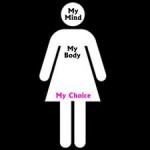 More intense sunlight exposure was linked with a decreased incidence of rheumatoid arthritis (RA) among women in the original Nurses' Health Study (NHS), although the more common use of sunscreen likely weakened the association in a later cohort, researchers found. Rheumatoid arthritis, or RA, is a form of inflammatory arthritis and an autoimmune disease. For reasons no one fully understands, in rheumatoid arthritis, the immune system – which is designed to protect our health by attacking foreign cells such as viruses and bacteria – instead attacks the body’s own tissues, specifically the synovium, a thin membrane that lines the joints. As a result of the attack, fluid builds up in the joints, causing pain in the joints and inflammation that’s systemic – meaning it can occur throughout the body.
More intense sunlight exposure was linked with a decreased incidence of rheumatoid arthritis (RA) among women in the original Nurses' Health Study (NHS), although the more common use of sunscreen likely weakened the association in a later cohort, researchers found. Rheumatoid arthritis, or RA, is a form of inflammatory arthritis and an autoimmune disease. For reasons no one fully understands, in rheumatoid arthritis, the immune system – which is designed to protect our health by attacking foreign cells such as viruses and bacteria – instead attacks the body’s own tissues, specifically the synovium, a thin membrane that lines the joints. As a result of the attack, fluid builds up in the joints, causing pain in the joints and inflammation that’s systemic – meaning it can occur throughout the body.
In the original Nurses' Health Study, which began in 1976, women (ages 30 to 55) living in states with the highest ultraviolet B (UVB) intensity had a 21% lower risk for RA compared with those living in states with low UVB levels according to Elizabeth Arkema, PhD, and colleagues from Harvard University.
But in NHSII, initiated in 1989 in women ages 25 to 42, no significantly lower risk was seen, the researchers reported online in Annals of the Rheumatic Diseases.
"The later birth cohort of NHSII participants (born between 1946 and 1964) were more likely aware of the dangers of sun exposure and, perhaps, had more sun-protective behavior, making residential UVB not as good a proxy for actual sun exposure in NHSII," they suggested.
Epidemiologic studies have found a correlation between an increased incidence of RA and other autoimmune diseases with higher latitude (more northern) areas of residence. In addition, experimental studies have demonstrated that UVB may suppress the immune system (which overacts in RA). Exposure to UVB also increases vitamin D synthesis in the skin, which, in turn, has altering effects on the immune system properties.
UVB flux is a measure that reflects exposure intensity based on altitude, latitude, and typical cloud cover patterns, and is expressed in Robertson-Berger units. This measure shows considerable variability in the U.S., ranging from 196 R-B units in sunny states such as Arizona and Hawaii to only 93 units in Oregon and Alaska.
Information on residence, health, diet, and lifestyle was acquired every 2 years from participants in both cohorts.
Similar findings of decreased risk for high exposure in NHS though not in NHSII were seen both for exposure levels at birth and at age 15. It thus remains unclear if the important window for UVB exposure is in childhood or adulthood. Further analyses found no significant heterogeneity according to skin type, vitamin D intake, or physical activity and body mass index.
These findings add to the increasing evidence that more intense sun exposure lowers the risk of RA, the researchers stated. "The mechanisms are not yet understood, but could be mediated by cutaneous production of vitamin D and attenuated by use of sunscreen or sun avoidant behavior," Arkema and colleagues wrote. They called for additional research to explore UVB dose intensity and timing of exposure.
EDITOR's NOTE: While the link to skin cancer and UVB exposure is well known, the increased use of sunscreen raises other health concerns that may require new approaches to find a "balance" so the benefits of a little sunshine are not totally lost.
Source reference:
Arkema E, et al "Exposure to ultraviolent-B and risk of developing rheumatoid arthritis among women in the Nurses' Health Study" Ann Rheum Dis 2013; DOI: 10.1136/annrheumdis-2012-202302.
 The U.S. Food and Drug Administration (FDA) this month approved the Natrelle 410 Highly Cohesive Anatomically Shaped Silicone-Gel Filled Breast Implant to increase breast size (augmentation) in women at least 22 years old and to rebuild breast tissue (reconstruction) in women of any age. Natrelle 410 implants are manufactured by Allergan, Inc.
The U.S. Food and Drug Administration (FDA) this month approved the Natrelle 410 Highly Cohesive Anatomically Shaped Silicone-Gel Filled Breast Implant to increase breast size (augmentation) in women at least 22 years old and to rebuild breast tissue (reconstruction) in women of any age. Natrelle 410 implants are manufactured by Allergan, Inc.
 A new study from France suggests that women who drink large amounts of diet soda are at increased risk for type 2 diabetes. The findings also support the previously documented association between high intake of regular sugar-sweetened beverages and the condition, report Guy Fagherazzi, from the Center for Research in Epidemiology and Population Health, Villejuif, France, and colleagues in a study
A new study from France suggests that women who drink large amounts of diet soda are at increased risk for type 2 diabetes. The findings also support the previously documented association between high intake of regular sugar-sweetened beverages and the condition, report Guy Fagherazzi, from the Center for Research in Epidemiology and Population Health, Villejuif, France, and colleagues in a study 
 When people with Type 2 diabetes are diagnosed with cancer – a disease for which they are at higher risk – they ignore their diabetes care to focus on cancer treatment, according to new Northwestern Medicine® research. But uncontrolled high blood sugar is more likely to kill them and impair their immune system’s ability to fight cancer.
When people with Type 2 diabetes are diagnosed with cancer – a disease for which they are at higher risk – they ignore their diabetes care to focus on cancer treatment, according to new Northwestern Medicine® research. But uncontrolled high blood sugar is more likely to kill them and impair their immune system’s ability to fight cancer. In January 2013, the American College of Obstetricians and Gynecologists (ACOG), which is the nation’s leading group in the field of obstetrics and gynecology, released an
In January 2013, the American College of Obstetricians and Gynecologists (ACOG), which is the nation’s leading group in the field of obstetrics and gynecology, released an  More intense sunlight exposure was linked with a decreased incidence of rheumatoid arthritis (RA) among women in the original Nurses' Health Study (NHS), although the more common use of sunscreen likely weakened the association in a later cohort, researchers found.
More intense sunlight exposure was linked with a decreased incidence of rheumatoid arthritis (RA) among women in the original Nurses' Health Study (NHS), although the more common use of sunscreen likely weakened the association in a later cohort, researchers found. FDA regulators announced they will not take action regarding a vending machine that dispenses emergency contraception on Shippensburg University's campus in Pennsylvania,
FDA regulators announced they will not take action regarding a vending machine that dispenses emergency contraception on Shippensburg University's campus in Pennsylvania,  During National Heart Month, we are reminded that heart disease is the number one killer of women. Educate yourself and women in your community by ordering a
During National Heart Month, we are reminded that heart disease is the number one killer of women. Educate yourself and women in your community by ordering a  More than 90 percent of women use at least one medicine during pregnancy, after all, you can still get a cold while pregnant or you may have a chronic disease that requires medication. Unfortunately, many drug studies have not included pregnant women and thus we may not have all the data we need to know if they are safe to take during pregnancy. About half of women ages 18 to 44 years old use the internet to determine if they can take their medicines during pregnancy. A new study shows that many internet sites list medicines that they say are safe to take during pregnancy despite a lack of evidenced-based safety data. Remember, if you are pregnant or planning to become pregnant:
More than 90 percent of women use at least one medicine during pregnancy, after all, you can still get a cold while pregnant or you may have a chronic disease that requires medication. Unfortunately, many drug studies have not included pregnant women and thus we may not have all the data we need to know if they are safe to take during pregnancy. About half of women ages 18 to 44 years old use the internet to determine if they can take their medicines during pregnancy. A new study shows that many internet sites list medicines that they say are safe to take during pregnancy despite a lack of evidenced-based safety data. Remember, if you are pregnant or planning to become pregnant: Women who are obese at the start of their pregnancy may be passing on insufficient levels of vitamin D to their babies, according to a new Northwestern Medicine® study. The study found that babies born to lean mothers had a third higher amount of vitamin D compared to babies born to obese moms.
Women who are obese at the start of their pregnancy may be passing on insufficient levels of vitamin D to their babies, according to a new Northwestern Medicine® study. The study found that babies born to lean mothers had a third higher amount of vitamin D compared to babies born to obese moms.